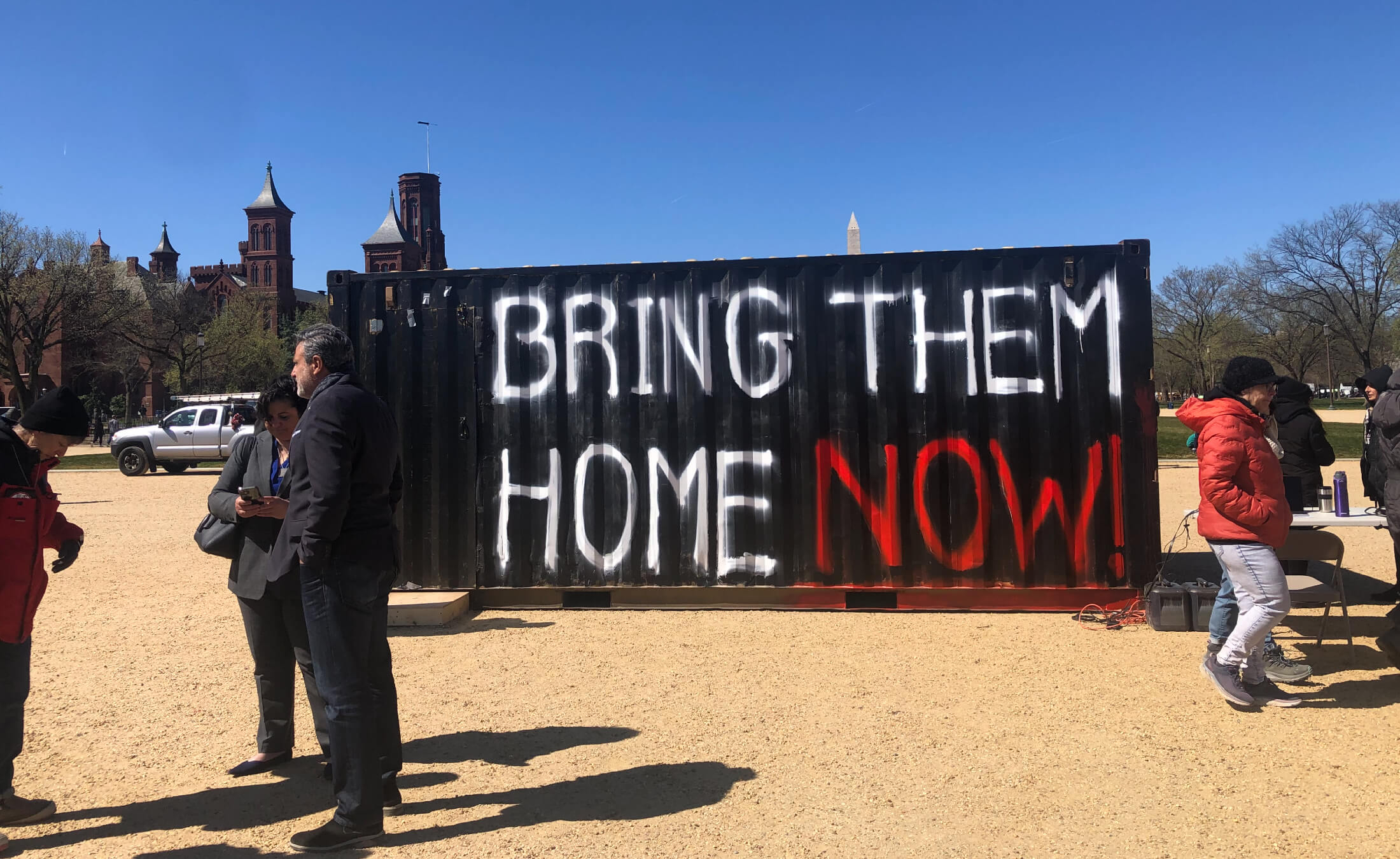
Photo EssayOn the National Mall, 3 minutes in a ‘Hamas tunnel’
Advocates for the hostages plan to take the tunnel to New York and other cities
Photo by Lauren Markoe
Photo EssayOn the National Mall, 3 minutes in a ‘Hamas tunnel’
Advocates for the hostages plan to take the tunnel to New York and other cities
Smack in the middle of the National Mall, there is a shipping container that advocates for the hostages taken by Hamas on Oct. 7 want you to walk through. Volunteers with the the Hostages and Missing Families Forum will tell you to wait a minute at its entrance, so your eyes can adjust to the darkness. The whole experience — walking the length of the container and watching a short video about those in captivity — takes about three minutes.
The 100-plus hostages have been held in Gaza for 166 days.
The container is protected by a guard and cost $1,800, a volunteer named Tamar Pinto told me when I visited on Thursday. It was placed on the Mall on Tuesday and will remain through Sunday, then is headed to New York City; Philadelphia; Rochester, New York; and beyond.
“We wanted it to be in the center of attention, during the Cherry Blossom Festival,” said Pinto, who lives in Rockville, Maryland. “In the shadow of the Capitol, hopefully we’ll get the attention of elected officials and keep in the public eye.”
Video projected on the container’s inner wall.
1 / 6
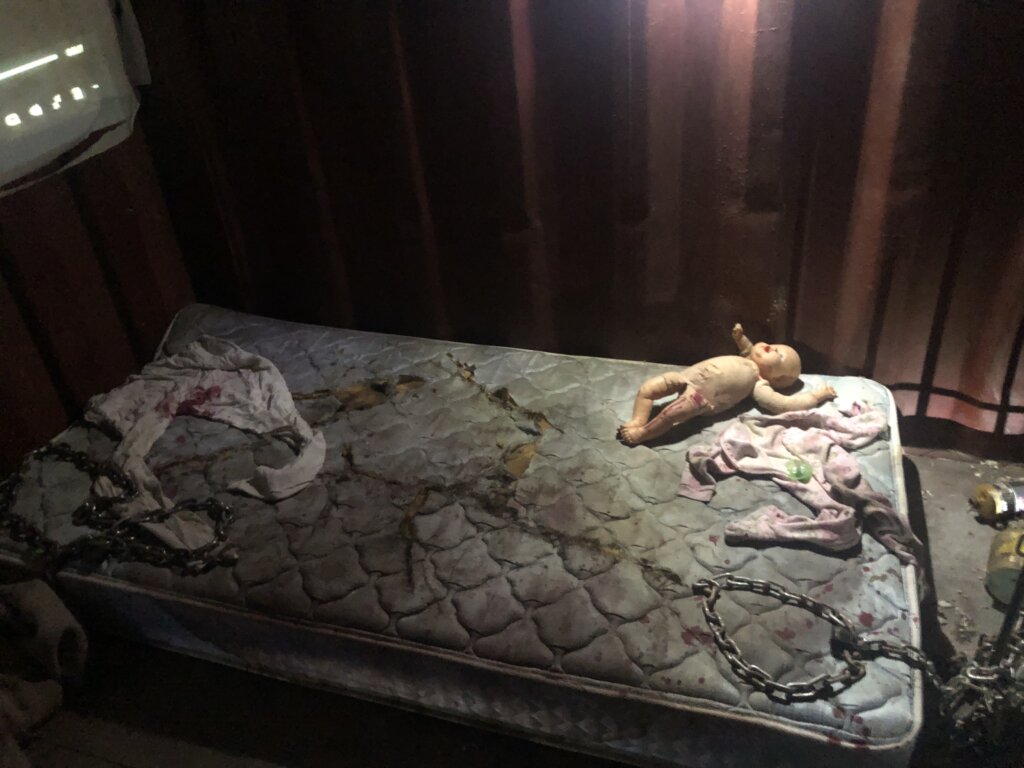
A mattress spattered with paint lies on the shipping container floor. Photo by Lauren Markoe
Take a step or two into the container, and you see a toilet with a handprint, made with red paint to look bloody. You hear screams of children, some urgent words in Arabic, and banging on metal. The audio is taken from the GoPro cameras Hamas terrorists wore on Oct. 7 when they attacked southern Israel, killing 1,200 people and taking 240 hostage.
More red paint is spattered on a mattress, where a naked doll is lying, evoking the scenes of the kibbutzim raided that day.
2 / 6
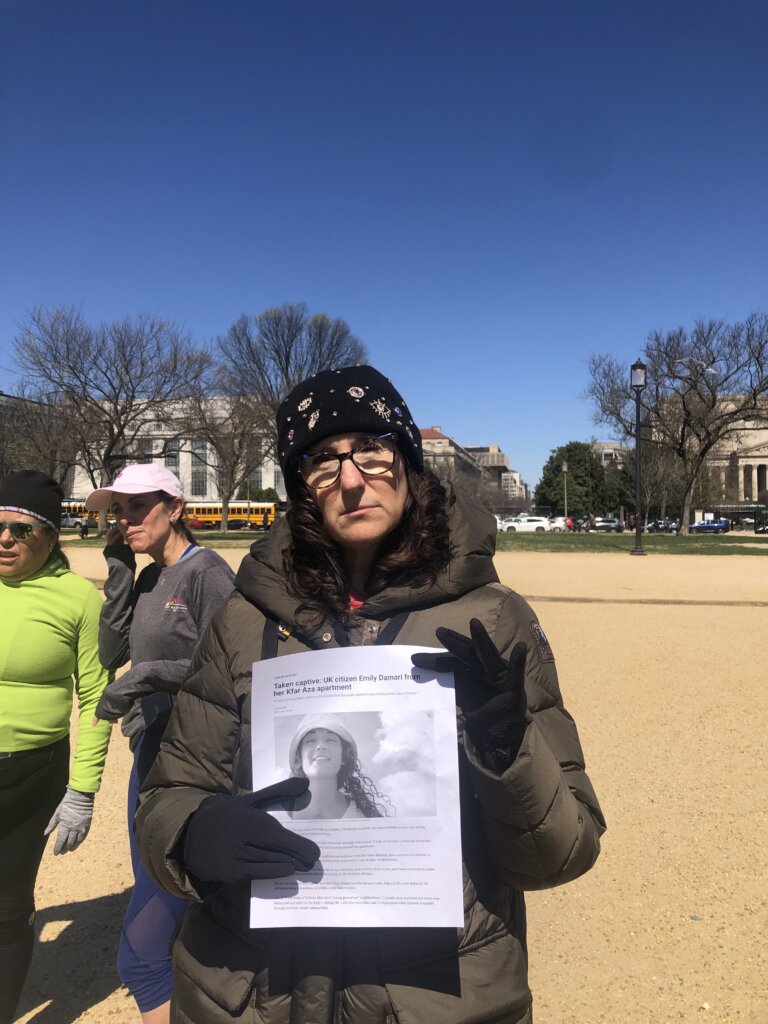
Debra Panitch came with a group of 20 from her synagogue, Beth Sholom of Rockville, Maryland. Photo by Lauren Markoe
Debra Panitch came to the container with a group of about 2o people from her synagogue, Beth Sholom of Potomac, Maryland. Before they walked through, they recited the Hebrew prayer for Jews in distress, and read about several of the hostages. Panitch held a picture of Emily Damari, a British-Israeli dual citizen who is 27 and was taken from her apartment on Kibbutz Kfar Aza.
Rabbi Nissan Antine said his congregation, which is Modern Orthodox, reads the names of the more than 130 hostages still in captivity every Shabbat.
3 / 6
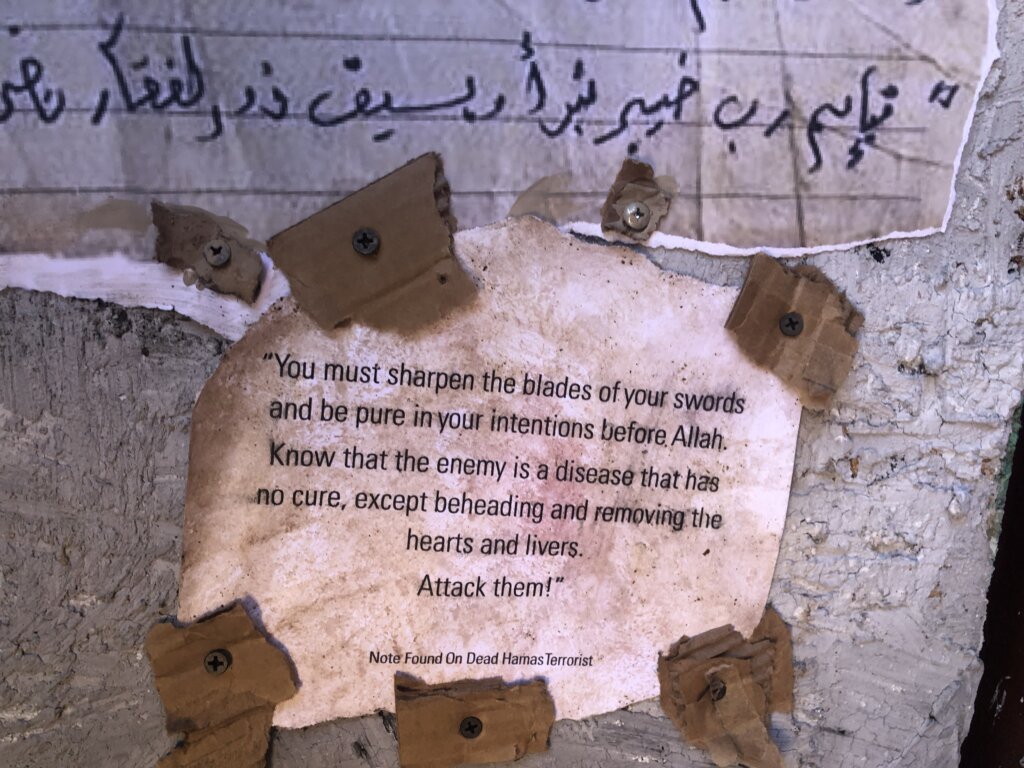
Photo by Lauren Markoe
A copy of a note found on a Hamas militant who attacked Israel on Oct. 7 is translated from Arabic to English, and posted at the entrance to the container.
4 / 6
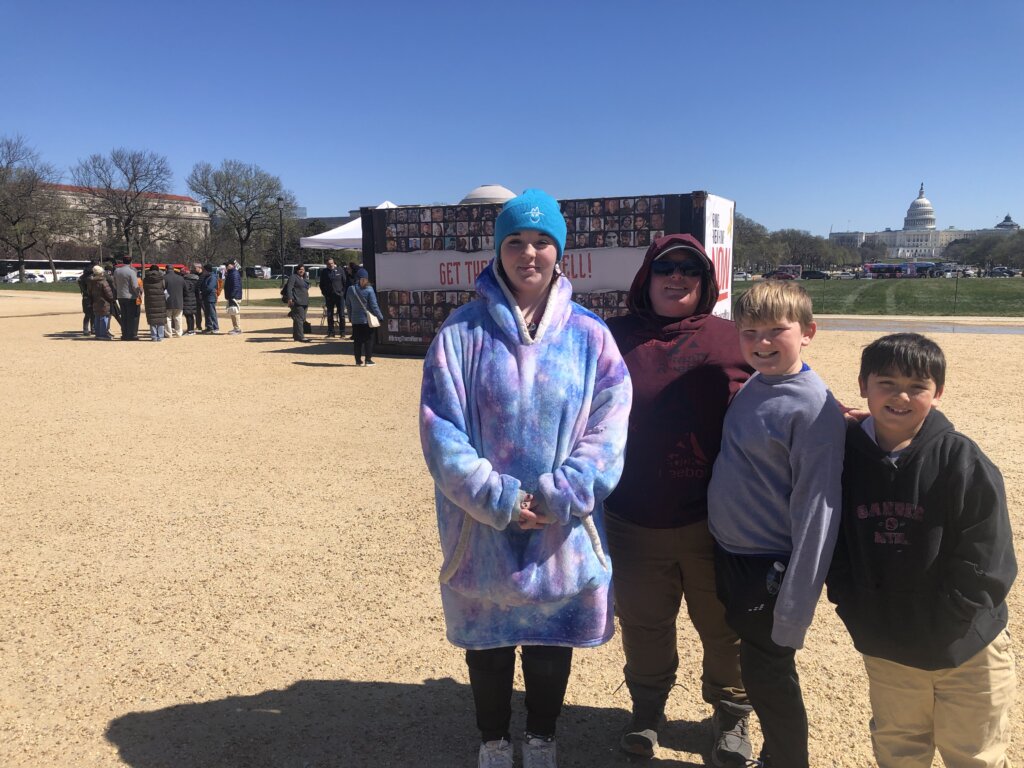
Tourist Hannah Morgan, in maroon sweatshirt, and her family stop in front of the shipping container. Photo by Lauren Markoe
Hannah Morgan, a tourist from Jacksonville, Alabama, passed the container as she and her family headed to the National Museum of American History. Her 15-year-old, Kylie, said she had seen something about the exhibit on social media. “The hashtag caught my eye,” Kylie told me.
“It’s informative,” said her mom. “More people need to know what’s going on.”
5 / 6
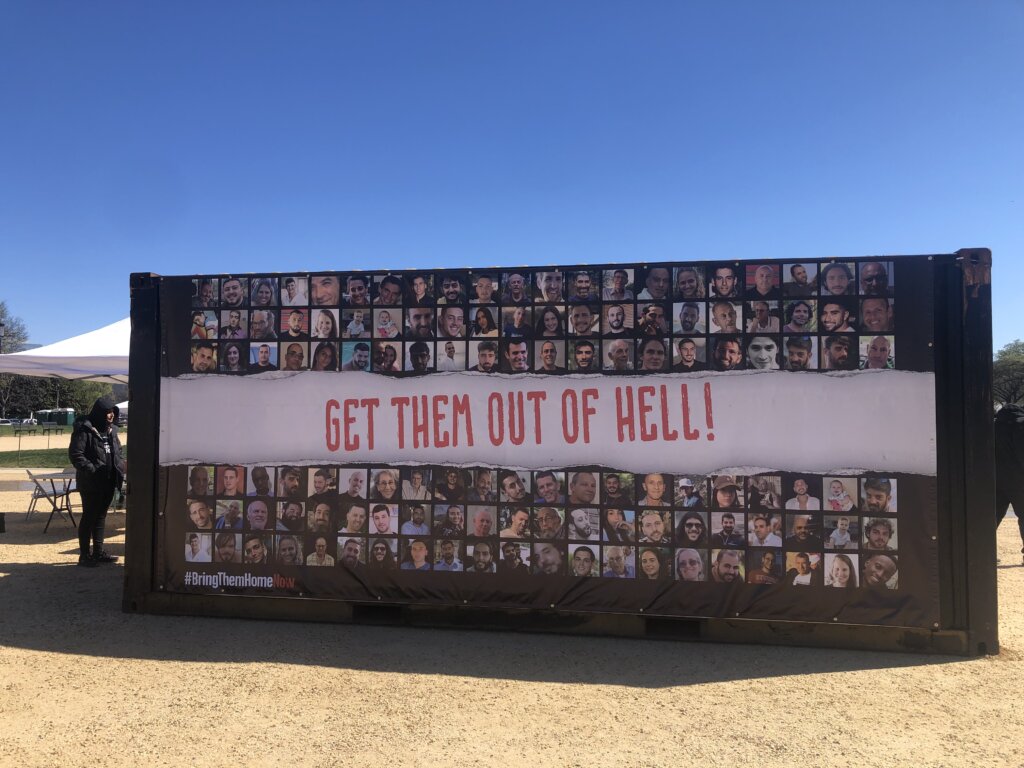
The faces of the hostages are plastered on one side of the container. Photo by Lauren Markoe
But the container was confusing to some passersby, and perhaps unwelcome to others.
A group of visiting teenagers looked puzzled as they walked by the side of the container plastered with the hostages faces. “Are they in jail?” one girl wondered. “Oh, no, not an old guy!” said another girl, looking at a photo of an elderly hostage.
I asked a man staring at the other side of the container for his thoughts. “Yes, thoughts,” he said, “but I’m not going to share them.” Then he walked away.
6 / 6
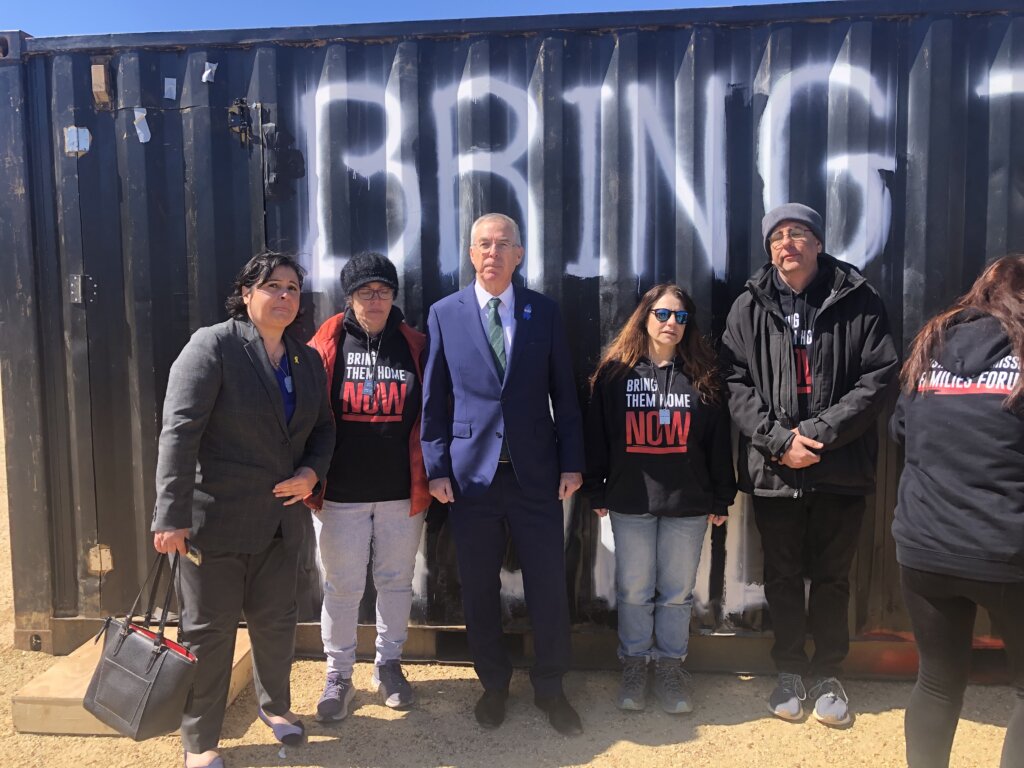
Israeli Ambassador to the U.S. Michael Herzog, in suit, stands with volunteers in front of the container. Photo by Lauren Markoe
Israeli Ambassador to the U.S. Michael Herzog paid a visit to the container Thursday and posed for photos with volunteers.
“It’s very powerful,” he said, after walking through it, adding that he is “hopeful” the hostages will soon be released.
















